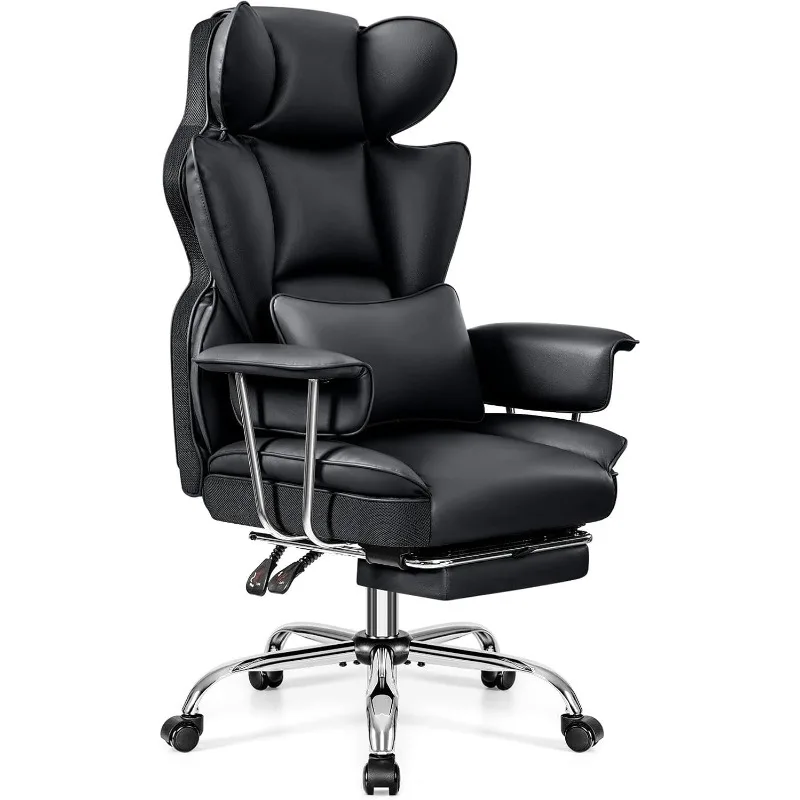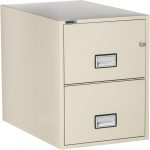Common Reasons Why Office Chairs Sink
When your office chair keeps sinking, it disrupts comfort and productivity. Several issues can cause this problem.
Worn Out Cylinder
The cylinder, or pneumatic lift, may wear out over time. It’s the part that allows the chair to adjust up and down. Regular use can lead to a loss of pressure, causing the chair to sink.
Damaged Seal or Piston
Inside the cylinder, seals and a piston maintain pressure. They can break or wear down, leading to sinking.
Loose Components
Nuts, bolts, and screws might loosen with use. This can affect chair stability and height.
Excessive Weight
Office chairs have weight limits. Too much weight can damage the chair’s mechanics, causing sinking.
Old Age
Simply put, an old chair may start sinking due to worn-out components. It’s a common sign that the chair has surpassed its lifespan.
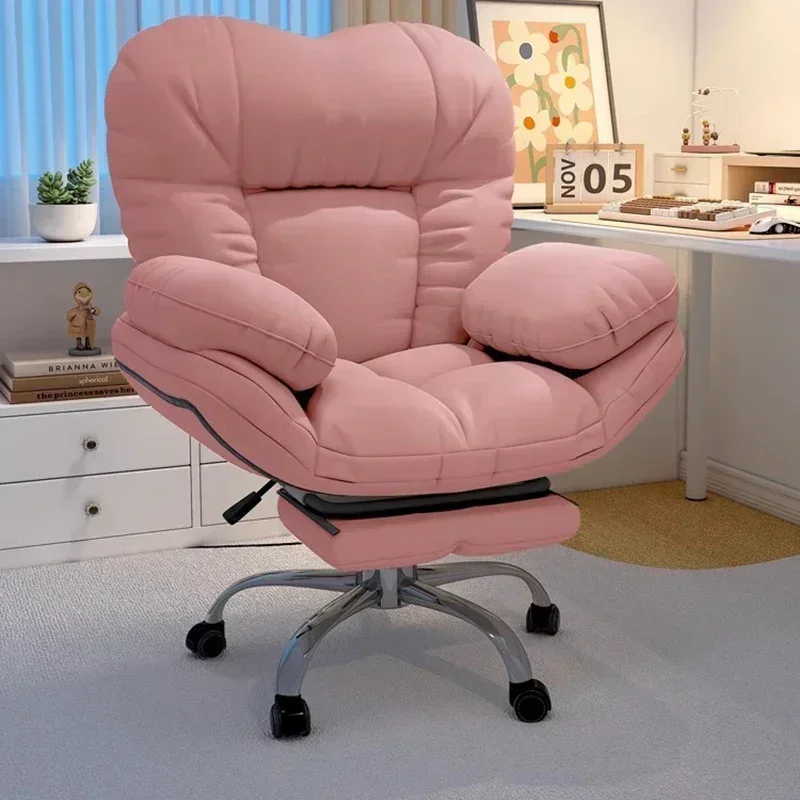
Tools and Materials Needed for Repair
Before you can fix an office chair that keeps sinking, make sure you have the right tools and materials. Here’s a simple checklist to help you prepare:
- Adjustable Wrench: This tool will help you tighten any loose components.
- Lubricant: A good-quality lubricant can free up any stuck parts.
- Pipe Wrench or Locking Pliers: These are useful for gripping the chair’s cylinder.
- Replacement Cylinder: Have this handy if your chair’s cylinder is beyond repair.
- Tape Measure: You’ll need this to measure the chair’s cylinder size.
- Gloves: Wear these to protect your hands during the repair.
- Cloth: Keep a cloth nearby to clean up any spills or debris.
Ensure you gather all these items before you start the repair process. Proper preparation will make the repair smoother and quicker. If your office chair keeps sinking, these tools and materials will help you get back to a comfortable workspace in no time.
Step-by-Step Guide to Fixing a Sinking Chair
A sinking chair can be a nuisance. Thankfully, fixing it can be simple. Here’s a guide to help you restore your chair’s functionality.
Identify the Problem
Start by finding the cause. Check the cylinder, seal, piston, and components for wear or damage.
Secure the Chair
Lay the chair on its side. Stabilize it with your foot to prevent it from moving.
Disassemble the Chair
Use an adjustable wrench to remove the base. Detach the cylinder using a pipe wrench or locking pliers.
Inspect the Cylinder
Examine it closely. If seals are damaged, consider a full replacement. If the issue is not severe, you might opt to repair.
Prepare Replacement Parts
If needed, install a new cylinder. Ensure it matches the chair’s specifications using a tape measure.
Lubricate Moving Parts
Apply lubricant to the new or existing cylinder. This step helps parts move smoothly.
Reassemble the Chair
Carefully put the chair back together. Use the wrench to tighten all components firmly.
Test the Chair
After reassembling, test the chair’s height adjustment. It should stay in place without sinking.
Fine-Tune Adjustments
Make additional adjustments if needed. Ensure all parts are secure and the chair holds its position.
By following these steps, you can fix your office chair that keeps sinking. Remember to use the correct tools and materials you’ve gathered. With patience and careful attention to detail, you can solve the sinking issue and enjoy a stable, comfortable seat once again.
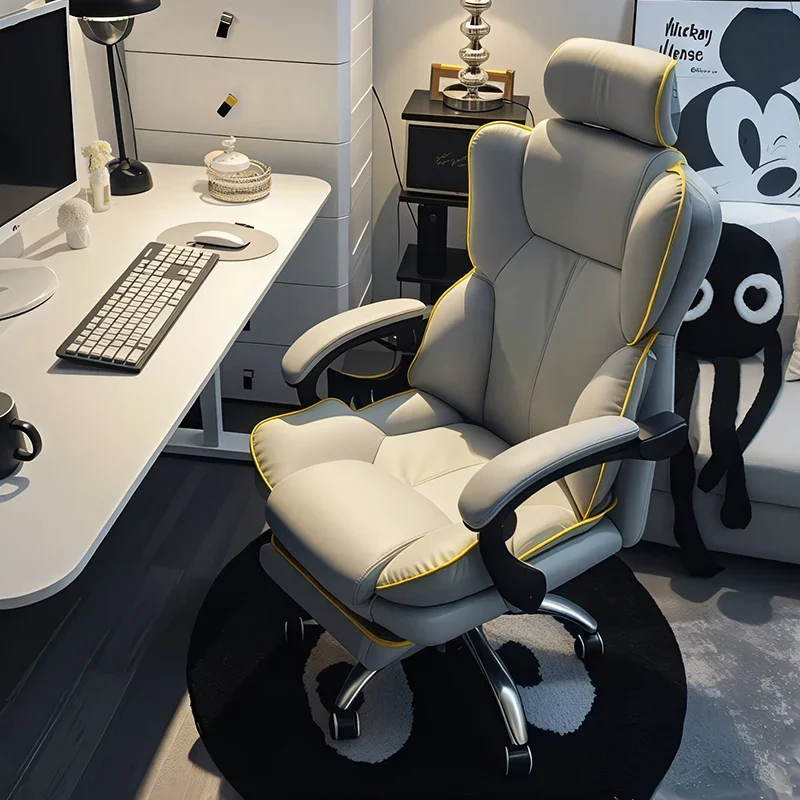
When to Replace the Cylinder vs. When to Repair It
Deciding whether to replace or repair the cylinder in your office chair depends on a few things. Look for signs such as severe wear, leaky seals, or a completely failed pneumatic lift. This means it’s time for a replacement. On the other hand, if the damage seems minor and the chair is relatively new, you might only need a repair. Here’s how to decide:
Signs That You Need a New Cylinder
- Consistent Sinking: If your office chair keeps sinking after you’ve tried repairing it, you likely need a new cylinder.
- Visible Damage: Check for visible cracks or damage to the cylinder.
- Age of Chair: Older chairs might benefit more from a cylinder replacement than a repair.
When to Consider Repairing Your Cylinder
- Minor Leak: If there’s a small leak, you might be able to fix it without a full replacement.
- Intact Seals: If the seals are not visibly damaged, lubrication might be all you need.
- Budget Constraints: Repairing can be a cost-effective option if budget is a concern.
Always assess the condition of your chair carefully. If you’re unsure about the damage, consider consulting a professional. Avoid wasting effort on repairs that won’t last. Replace parts that are beyond help. This will ensure your office chair supports you properly and lasts longer.
Preventative Measures to Avoid Future Sinking
Preventing your office chair from sinking again requires proactive maintenance. Here are key measures to help you maintain a stable chair:
- Regular Inspection: Check your chair regularly for any signs of wear or damage. Look at the cylinder, bolts, and screws to ensure they are tight and intact.
- Proper Usage: Avoid excessive bouncing or leaning too far back in your chair. This puts stress on the pneumatic lift and other components.
- Weight Distribution: Ensure that your weight is evenly distributed while sitting. Avoid sitting on the edge or using the chair as a step stool.
- Scheduled Maintenance: Lubricate the chair’s moving parts periodically. This will keep the mechanisms smooth and less prone to damage.
- Immediate Repairs: If you notice any issue, fix it immediately. A small problem can turn into a bigger one if ignored.
By following these steps, you can extend the life of your chair and avoid frequent sinking. A well-maintained chair not only offers better support but also ensures a comfortable working environment.
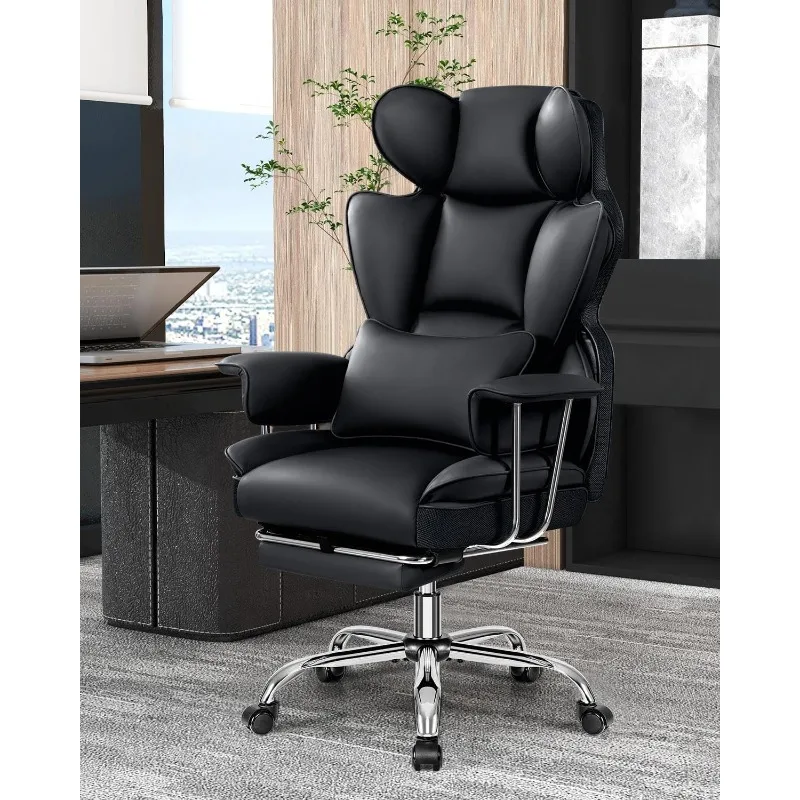
Troubleshooting Other Common Office Chair Issues
While a sinking office chair is a frequent issue, other common problems can also disrupt your comfort and productivity. Identifying and fixing these problems ensures a longer lifespan for your chair and a more comfortable working environment. Here are some common office chair issues and how to troubleshoot them:
Squeaky Movements
An office chair that squeaks when you move can be annoying. Often, this noise is due to insufficient lubrication of moving parts. Apply a lubricant to all joints and moving parts regularly.
Stuck Wheels
Dirt and debris can jam the wheels of an office chair, making it hard to move. Clean the wheels with a damp cloth and remove any hair or debris entangled in them.
Loose Armrests
Frequent use can loosen the armrests. Tighten all screws and bolts at regular intervals to ensure the armrests remain secure.
Uncomfortable Backrest
If the backrest is not providing proper support, check for adjustable features. Adjust the backrest to match the natural curve of your spine, or consider adding a cushion for better support.
Uneven Sitting
If the chair tilts to one side, it might be due to uneven leg lengths or damaged wheels. Check and replace if necessary to ensure stability.
Addressing these issues promptly can prevent further damage and enhance your seating experience. Keeping an office chair in good working condition not only adds to comfort but also extends its usability in your workspace.
Expert Tips for Maintaining Your Office Chair
To prevent your office chair from frequent repairs, proper maintenance is key. Here are some expert tips for keeping your chair in top shape:
- Check for Loose Parts: Regularly inspect your chair for any loose screws or bolts. Tighten them as needed to avoid instability or further damage.
- Clean Regularly: Dust and wipe down your chair frequently. Use a gentle cleaner that won’t harm the chair’s material.
- Avoid Overloading: Stick to the weight limit suggested by the chair’s manufacturer. Overloading can strain the chair’s mechanisms.
- Use on Appropriate Surfaces: Rolling your chair on carpets or uneven surfaces can wear out the wheels. Use a chair mat if necessary.
- Adjust Settings Periodically: Don’t hesitate to adjust the chair’s settings for better comfort. Doing so can also reduce strain on its parts.
- Rotate Usage: If possible, use different chairs to prevent wear and tear on a single one.
- Keep Away from Direct Sunlight: Exposure to sunlight can cause the chair’s material to weaken over time. Position your chair away from direct sun.
By implementing these simple yet effective maintenance measures, you can prolong the life of your office chair and ensure it stays comfortable and supportive as you work.
Safety Precautions to Follow While Repairing an Office Chair
While tackling the issue of a sinking office chair, safety should never be compromised. Here are some precautions to help ensure a safe repair process:
- Work in a Spacious Area: Choose an open area to avoid cramped conditions. This allows for easy movement and reduces the risk of injury.
- Wear Protective Gear: Use gloves to protect your hands from sharp edges and lubricants. Safety goggles are advised when handling small, spring-loaded parts.
- Keep Tools Organized: Before you begin, lay out your tools and materials. This prevents accidents and helps you find what you need quickly.
- Disconnect Any Adjustments: If your chair has electric controls, make sure it’s unplugged. This keeps you safe from electrical shocks.
- Stabilize the Chair: When laying the chair on its side, ensure it won’t move. Use your foot or a heavy object for stability.
- Be Mindful of Your Posture: While repairing, maintain a good posture. Bend from your knees, not your back, to prevent strain.
- Follow Instructions Carefully: Read through all instructions before starting. This makes sure you understand each step and its safety implications.
- Never Force Parts: If a part isn’t fitting, don’t force it. This can break the part or cause injury. Take a step back and try again carefully.
- Proper Disposal of Old Parts: When replacing parts like a cylinder, dispose of the old one correctly. Follow local regulations for disposal of these materials.
By adhering to these safety measures, you’ll reduce risks and ensure a smoother repair experience for your office chair that keeps sinking.
